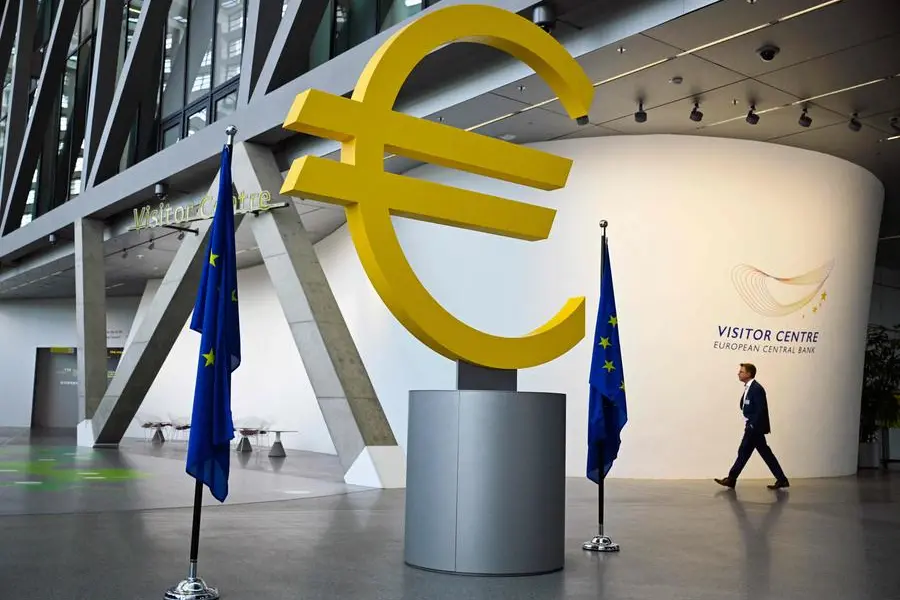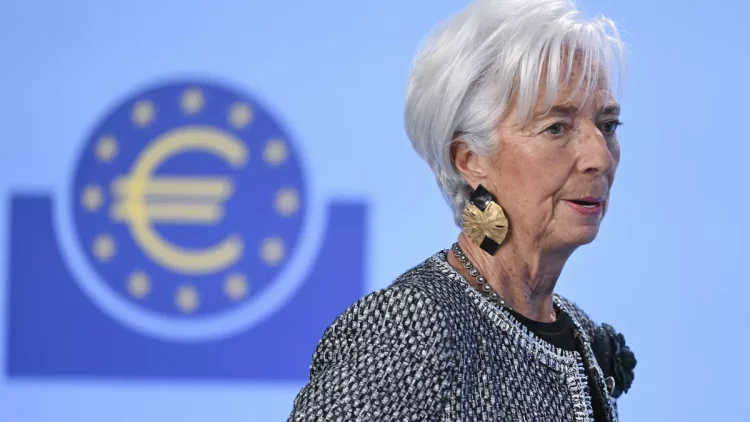Introduction: Overview of the European Central Bank (ECB)’s Recent Actions in Response to Inflation and Economic Slowdown
The European Central Bank (ECB) has found itself at the center of a critical economic crossroads in 2025. As Europe grapples with a delicate balance between controlling inflation and stimulating economic growth, the decisions made by the ECB will significantly shape the economic landscape for years to come. In recent years, the region has faced soaring inflationary pressures and the lingering aftereffects of the global economic slowdown.
Following the economic turbulence caused by the COVID-19 pandemic and subsequent disruptions, the ECB was forced into a difficult position: how to maintain financial stability, control inflation, and foster growth in the face of numerous challenges. The central bank’s policy actions—particularly with regard to interest rates, quantitative easing (QE), and its stance on inflation control—will have broad implications for the Eurozone economy and investors alike.
This article aims to analyze the ECB’s recent policy shifts, assess their impact on the Eurozone economy, and offer insights into how investors can position their portfolios in light of these developments.
Recent Policy Shifts: The ECB’s Approach to Interest Rates, Quantitative Easing, and Its Stance on Inflation Control
In response to persistent inflationary pressures, the ECB has adopted a series of aggressive monetary policies over the last few years. These measures were aimed at stabilizing the region’s economy, but with mixed results. Key actions include:
1. Interest Rate Adjustments
The ECB’s most prominent move has been its interest rate policy. Since 2023, the ECB has implemented a series of interest rate hikes in an attempt to curb runaway inflation. At the time of writing in 2025, the main refinancing rate is at its highest level in over a decade, signaling the ECB’s determination to bring inflation under control.
For investors, these interest rate hikes have major implications. Higher rates tend to increase borrowing costs, which can lead to slower economic growth, reduced consumer spending, and tighter liquidity in the market. On the other hand, these hikes have provided opportunities for fixed-income investors, as bond yields have risen in tandem with interest rates. However, concerns about the economic slowdown in Europe have created a delicate balance for the ECB. The challenge will be to determine how much further it can tighten rates without stifling growth.
2. Quantitative Easing (QE) and Asset Purchases
Despite its rate hikes, the ECB has continued to engage in targeted quantitative easing to support specific sectors and regions within the Eurozone. This has primarily been focused on purchasing government bonds and other assets to inject liquidity into the financial system.
While the ECB’s QE program has helped maintain favorable borrowing conditions for the Eurozone’s struggling economies, it also raises concerns about the long-term inflationary effects of an overly accommodative policy. As inflation moderates and the ECB shifts towards more traditional monetary policy tools, the future of QE in Europe is uncertain. Investors in fixed-income assets and sovereign debt should be closely monitoring any changes to these policies, as it could impact bond yields and pricing.
3. Stance on Inflation Control
Inflation in the Eurozone peaked at unprecedented levels in 2022 and 2023, forcing the ECB to adopt a more aggressive approach toward tightening monetary conditions. The ECB’s mandate is to maintain price stability, and it has been walking a tightrope between controlling inflation and fostering economic growth.
For 2025, the ECB’s primary focus remains on inflation control, and it has signaled that it will take whatever measures are necessary to bring inflation back to its target of around 2%. The central bank’s hawkish stance—coupled with its commitment to reducing asset purchases—indicates a more restrictive monetary policy than the expansive QE programs of previous years.

Impact on the Eurozone Economy: How the ECB’s Decisions Are Shaping Economic Growth, Consumer Spending, and Investment in the Region
The ECB’s recent actions have significant consequences for the broader Eurozone economy. On one hand, its measures have contributed to a slowing economic growth, with consumer spending taking a hit as a result of higher borrowing costs and reduced liquidity. On the other hand, these policies have helped to stabilize the euro area’s inflationary environment, particularly in countries like Germany, France, and Italy, where inflation has been rampant in recent years.
1. Slower Economic Growth
Higher interest rates and tighter financial conditions can dampen demand for both consumer goods and business investments. As borrowing becomes more expensive, consumers are more likely to cut back on discretionary spending, and companies may delay or reduce expansion plans.
The services sector—which accounts for a significant portion of Eurozone GDP—is particularly sensitive to rising rates. Retail, automotive, and real estate sectors are among the most vulnerable. However, some sectors, such as technology and green energy, could see continued growth as governments push for digital transformation and sustainability.
2. Impact on Consumer Spending
With inflation still relatively high, European consumers are increasingly feeling the squeeze. Rising food and energy prices have eaten into disposable income, leading to lower consumption levels. This, combined with higher borrowing costs from ECB rate hikes, means that European households have less room to spend, further slowing economic recovery in certain regions.
On the other hand, consumers in countries like Germany and the Netherlands, which have experienced lower inflation rates, are more insulated from the effects of ECB policy tightening. The shift in spending behavior is notable in the luxury goods market, which continues to show resilience despite the broader slowdown.
3. Investment Landscape and Market Dynamics
The tightening of ECB policy has also led to a shift in the investment landscape. With interest rates higher, fixed-income investments such as government bonds and corporate bonds have become more attractive to investors. However, the trade-off is the potential risk of lower capital appreciation as market conditions tighten.
Equity markets have been more volatile, as higher rates have weighed on corporate earnings expectations. Companies that rely heavily on debt financing, such as those in the real estate and construction sectors, are facing a more challenging environment. Conversely, sectors like technology, green energy, and renewables—which are somewhat insulated from high interest rates—could present opportunities for investors looking for growth in the face of broader economic uncertainty.
Implications for Investors: How Changes in ECB Policy Are Influencing Bond Markets, Equity Markets, and Investment Strategies
For investors in 2025, the ECB’s monetary policy shift will be a key factor influencing their portfolio decisions. While higher interest rates may continue to create a challenging environment for equity markets, certain investment sectors and asset classes will likely outperform.
1. Bond Markets
The ECB’s hawkish stance on interest rates will continue to have a significant impact on the bond market. As interest rates rise, bond prices typically fall, and investors must be cautious about the duration risk in their bond portfolios. However, with rising yields, investors in short-term bonds and floating-rate instruments could benefit from more attractive returns.
European sovereign debt may also see volatility, particularly in countries with higher debt levels, such as Italy and Greece, which could face challenges if borrowing costs rise further.
2. Equity Markets
The equity market will likely face a volatile 2025, with growth stocks and tech stocks potentially experiencing headwinds due to higher rates. However, investors should focus on sectors that are less sensitive to interest rate changes, such as energy, consumer staples, and defensive stocks.
Additionally, investors could consider ESG-focused investments (environmental, social, and governance) as European policymakers continue to push for green policies and sustainability initiatives.
3. Real Estate and Property Markets
The ECB’s tightening policies will continue to impact the real estate market, particularly in the commercial and residential sectors. Higher rates will make mortgages more expensive, potentially leading to a slowdown in property transactions. However, areas such as sustainable real estate, logistics, and green building projects might see continued investor interest due to growing demand for environmentally friendly buildings.
Outlook: Will the ECB Continue Its Current Policy Direction, or Will It Adjust to New Economic Realities?
Looking ahead, the ECB faces significant challenges as it balances its dual mandate of controlling inflation while promoting economic growth. While there are signs that inflation is beginning to moderate, the potential for global geopolitical instability, an energy crisis, or unforeseen shocks could influence the ECB’s decision-making process.
For now, the ECB’s policy will likely remain restrictive in the short term, as it aims to keep inflation in check. However, there is a chance that as inflationary pressures subside, the ECB could adjust its policy stance to accommodate a more growth-oriented approach in the medium-to-long term.
For investors, this means continuing to monitor ECB decisions closely, as they will continue to shape the investment climate in Europe throughout 2025 and beyond.





























